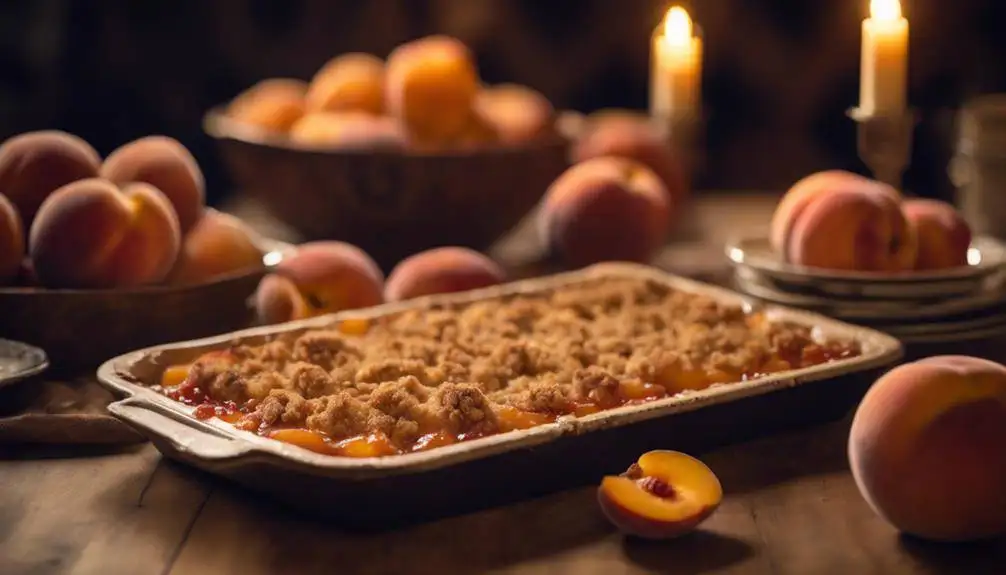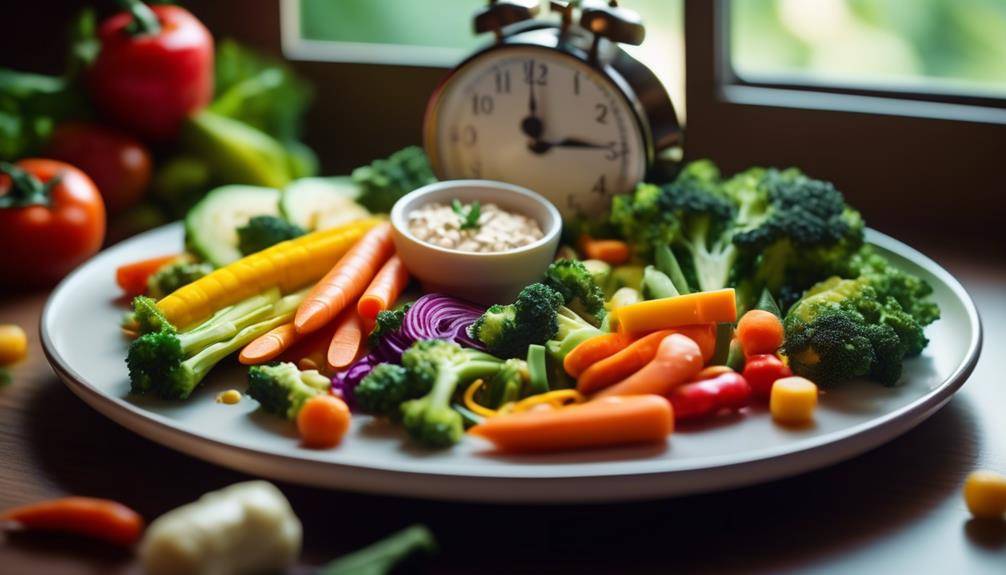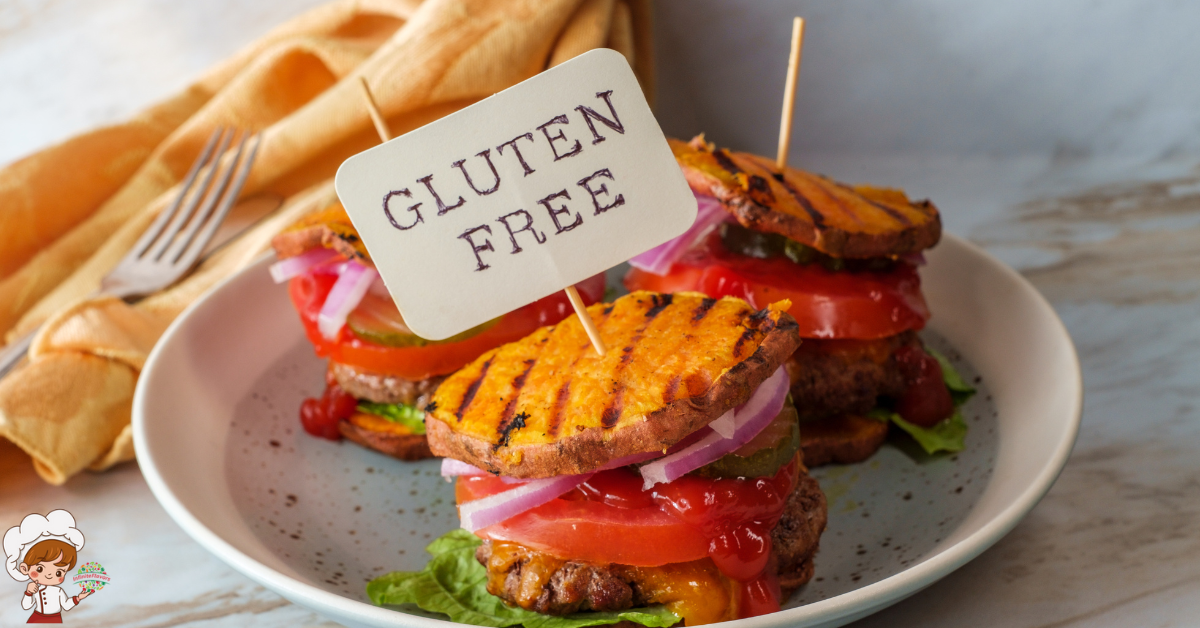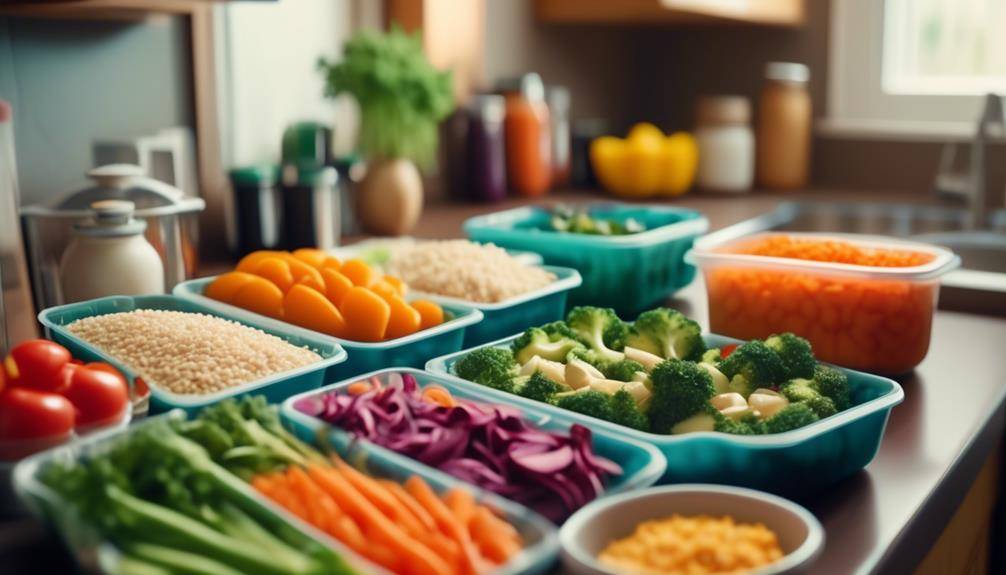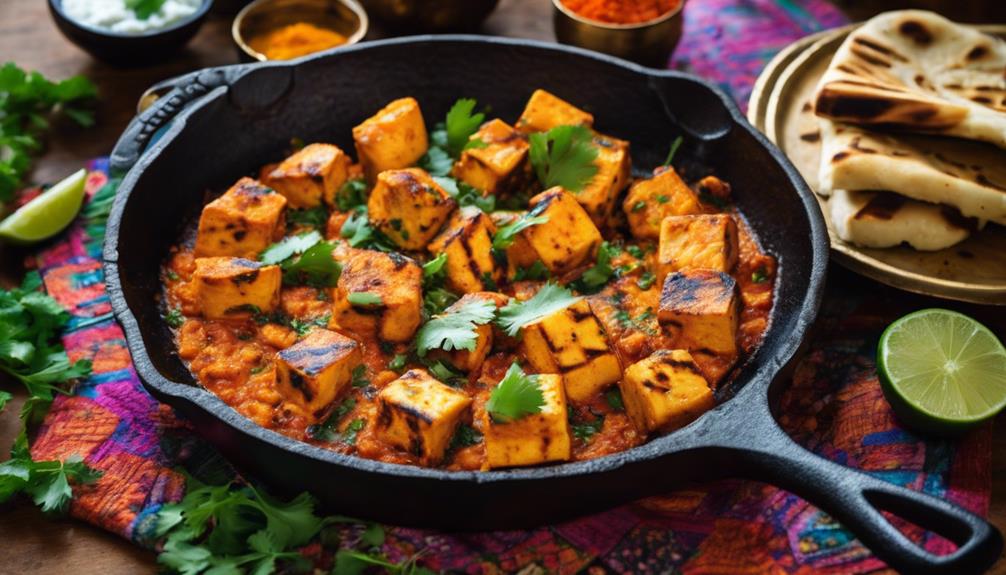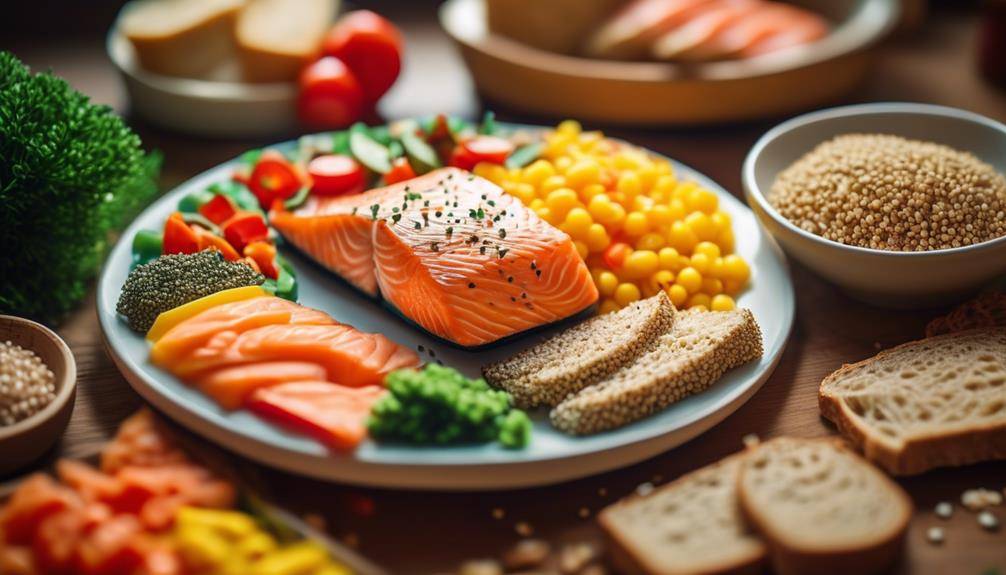How To Glaze A Turkey
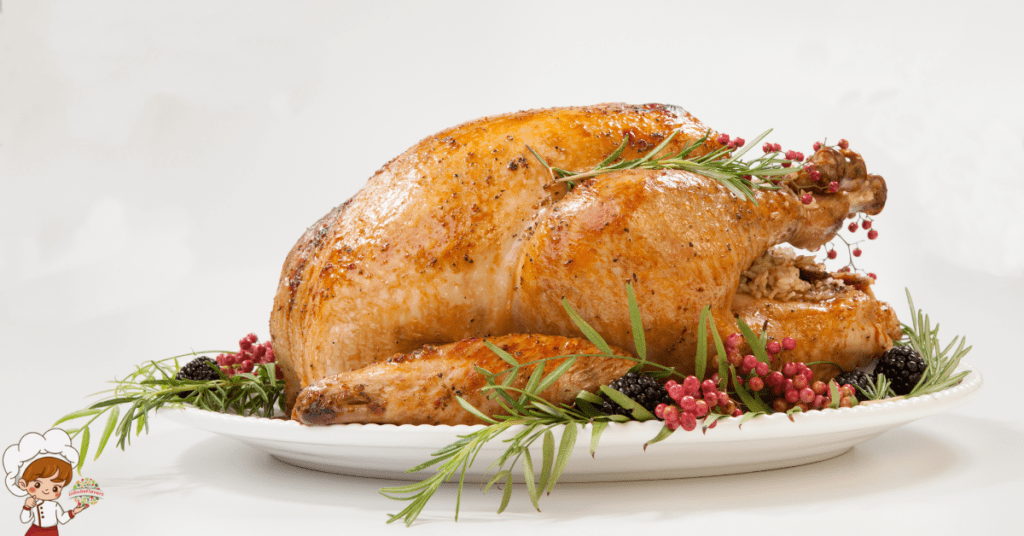
How To Glaze A Turkey, start by preparing your glaze mix using ingredients like honey, maple syrup, or a mix of savory elements for depth. Apply the glaze 30 to 45 minutes before your turkey’s done cooking, brushing it every 15 to 20 minutes to build flavor layers. Make sure the turkey is properly cooked—an internal temperature of 165°F is key. If the glaze starts to brown too quickly, loosely cover the turkey with foil. Once it’s done, let it rest to lock in moisture. For more tips on making your turkey shine, keep exploring!
Choosing the Right Turkey
When it comes to choosing the right turkey, timing can make all the difference. Start your selection early, especially if you’re aiming for a heritage breed. These turkeys, known for their rich flavor profiles, often sell out quickly. If you prefer organic options, check local farms or specialty stores for availability.
Next, consider the frozen versus fresh debate. Fresh turkeys are typically juicier and more flavorful, but they require more immediate preparation. If you opt for frozen, make sure to plan ahead for the thawing process, which can take several days. Size considerations also play a significant role in your choice. A general rule of thumb is to allocate about 1 to 1.5 pounds per person, ensuring everyone gets enough to enjoy.
Cooking time is another factor to keep in mind. Larger birds require longer cooking times, and if you’re brining your turkey, this can impact the overall timeline. Brining methods vary, but a good brine can enhance moisture and flavor, making your turkey even more delectable.
Lastly, don’t overlook ethical sourcing. Look for turkeys raised humanely, as this not only supports better animal welfare but often results in a superior product. By carefully considering these elements, you’ll find the perfect turkey that fits your taste and values, setting the stage for a delicious holiday meal.
Preparing the Turkey
Now that you’ve chosen the right turkey, it’s time to get it ready for glazing. Start by thawing it properly, ensuring it’s clean and safe to handle. This step is essential for achieving a delicious, perfectly glazed turkey.
Choosing the Right Turkey
Selecting the perfect turkey is essential for a successful meal. Start by deciding between fresh and frozen options. Fresh turkeys are often juicier and offer better flavor, but frozen ones can be more convenient and widely available. Next, consider the size of your turkey. A good rule of thumb is to allocate about 1.5 pounds per person, ensuring everyone gets enough to enjoy.
If you’re after unique flavors, look into heritage breeds. These turkeys are traditionally raised and often boast richer taste profiles compared to standard varieties. If you’re health-conscious, check out organic options, which are raised without antibiotics or synthetic hormones, and can enhance your meal’s quality.
When it comes to flavor profiles, think about how you plan to glaze your turkey. Some breeds pair better with sweet glazes, while others might shine with savory or spicy flavors. Ultimately, choose a turkey that not only suits your cooking style but also meets your guests’ preferences. With the right turkey in hand, you’re one step closer to serving a memorable holiday feast.
Thawing and Cleaning Process
Once you’ve chosen the perfect turkey, the next steps involve thawing and cleaning it properly for a delicious glaze. There are a few thawing methods you can use. The safest way is to thaw it in the refrigerator, allowing about 24 hours for every 4-5 pounds. If you’re short on time, you can also submerge the turkey in cold water, changing the water every 30 minutes. Just remember, never thaw it at room temperature, as this can lead to bacteria growth.
Once your turkey’s fully thawed, it’s time to clean it. Start by rinsing it under cold water, ensuring you remove any leftover feathers or debris. Use cleaning tips like wearing gloves to avoid any cross-contamination. Don’t forget to clean the cavity thoroughly. After rinsing, pat the turkey dry with paper towels to help the glaze stick better later on.
Essential Glazing Tools
The right tools can make all the difference when it comes to glazing a turkey, transforming a simple dish into a culinary masterpiece. To achieve the perfect glaze, you’ll need a few crucial tools that will streamline your process and enhance the flavor of your turkey.
Start with a good-quality glazing brush. This tool allows you to evenly coat your turkey with the glaze, guaranteeing every bite is packed with flavor. Look for brushes made from silicone or natural bristles, as they’ll hold the glaze well and withstand high temperatures.
Next, basting spoons are a must-have. These versatile spoons let you scoop up the delicious juices from the bottom of the roasting pan and drizzle them over the turkey, adding moisture and flavor throughout cooking.
Speaking of roasting pans, invest in a sturdy one that can handle the weight of your turkey. A pan with high sides is ideal for catching drippings, which can be used for gravy or additional basting. Make sure the pan is large enough to accommodate your turkey comfortably.
Lastly, don’t overlook thermometer usage. A reliable meat thermometer guarantees your turkey reaches the proper internal temperature without overcooking. This tool is crucial for achieving juicy, perfectly glazed turkey every time.
With these essential glazing tools at your disposal, you’ll be well-equipped to create a show-stopping turkey that will impress your guests and elevate your holiday feast.
Popular Glaze Ingredients
With the right tools in hand, you can start thinking about what goes into your glaze. The ingredients you choose can transform your turkey into a mouthwatering centerpiece. One popular base is maple syrup, which adds a rich sweetness. If you’re looking for a tangy twist, consider incorporating citrus zest; it brightens up the flavor profile beautifully.
Honey mustard brings a delightful balance of sweet and tangy, making it a fantastic choice for glazing. You can also add soy sauce for an umami boost, giving your turkey depth and complexity. Don’t forget about brown sugar; it caramelizes beautifully in the oven and enhances the glaze’s sweetness.
For a more unique flavor, try incorporating apple cider. Its fruity notes will complement the turkey, especially when mixed with balsamic vinegar, which adds a hint of acidity. Garlic powder can elevate your glaze, providing a savory note that pairs well with the sweetness of other ingredients.
Worcestershire sauce is another great addition, bringing a savory umami kick that balances the sweetness. If you want a classic touch, a mustard glaze can work wonders, offering a tangy and zesty flavor that’s hard to resist.
Experiment with these ingredients to create a glaze that suits your taste. Remember, the right combination can make your turkey not just good, but truly unforgettable. Happy glazing!
Making Your Glaze
Now that you’ve picked your favorite glaze ingredients, it’s time to create the perfect mixture. You’ll want to focus on how the flavors blend together and the techniques for mixing them smoothly. Let’s explore how to achieve that delicious glaze that’ll make your turkey shine.
Choosing Your Ingredients
While you might think any sweet or savory ingredient will work for a turkey glaze, choosing the right combination can elevate your dish to new heights. Start by considering glaze flavors that complement turkey’s natural taste. Traditional options like brown sugar and maple syrup provide sweetness, while mustard or soy sauce adds a savory depth.
When thinking about ingredient combinations, balance is key. For a sweet-and-sour profile, mix honey with balsamic vinegar or citrus juices. If you prefer something spicier, consider adding chili powder or ginger to your sweet base. Fresh herbs like rosemary or thyme can also enhance the flavor, bringing a touch of freshness to your glaze.
Don’t forget about texture! Adding ingredients like crushed nuts or seeds can give your glaze a delightful crunch, making each bite more interesting. Experimentation is encouraged, so feel free to combine different elements until you find your perfect mix. Remember, the ideal glaze should not only enhance the turkey but also create a mouthwatering aroma that fills your kitchen. With the right choices, your turkey will be the star of the meal!
Mixing Techniques Explained
Creating your perfect turkey glaze requires some careful mixing techniques to confirm all the flavors meld beautifully. Start by selecting your base ingredients, like honey or maple syrup, which will provide a rich sweetness. Next, incorporate savory elements such as mustard, soy sauce, or balsamic vinegar to create balanced flavor profiles.
When you mix these ingredients, use a whisk or a fork to confirm an even consistency. If you’re adding spices or herbs, like rosemary or garlic, finely chop them first to release their oils and enhance their flavors. Remember to taste as you go; adjusting sweetness or acidity can elevate your glaze to new heights.
For glazing methods, consider applying the mixture in layers. Brush on the glaze during the last hour of roasting, allowing it to caramelize without burning. You can also baste your turkey periodically for a thicker, more flavorful coat. If you have leftover glaze, don’t hesitate to serve it on the side for extra flavor. With these mixing techniques, you’ll create a turkey glaze that’s bursting with flavor and sure to impress your guests.
Timing Your Glaze Application
Timing is essential for achieving a perfectly glazed turkey that dazzles both the eyes and the palate. To get the best results, you need to pay close attention to glaze timing and application frequency throughout the cooking process. Generally, you’ll want to begin glazing your turkey about 30 to 45 minutes before it’s done cooking. This allows the glaze to caramelize and create that beautiful, shiny finish without burning.
As your turkey cooks, keep an eye on it. You should aim to apply the glaze every 15 to 20 minutes during the final stages of cooking. This application frequency not only builds layers of flavor but also helps to achieve that mouthwatering, glossy appearance. Remember, the key is to avoid adding the glaze too early. If you apply it at the start of the roasting process, the sugars in the glaze can burn, leaving you with a less-than-attractive result.
Use a brush or spoon to apply the glaze evenly, ensuring every part of the turkey gets its share. If you notice that the skin is browning too quickly, you can loosely cover the turkey with aluminum foil to prevent over-browning while still allowing the glaze to develop.
Techniques for Applying Glaze
To achieve the best results when glazing your turkey, it’s vital to apply the glaze consistently during the final cooking phase. Start by preparing your glaze in advance, guaranteeing it complements the flavors of your turkey. Whether you’re using a sweet glaze with honey and citrus or a savory option with herbs and spices, flavor pairing is fundamental for a delicious outcome.
Once your turkey is nearing its cooking completion, select the right brushing techniques. Use a basting brush to apply the glaze evenly across the surface of the turkey. This not only enhances the appearance but also makes sure the flavors penetrate the skin. Be generous but avoid pooling; you want an even coat that won’t drip off.
Consider a two-step application process. First, brush a layer of glaze on the turkey, then allow it to bake for about 15 minutes. After this initial layer has set, apply another coat using a gentle back-and-forth motion. This technique helps build a rich, flavorful crust.
Don’t forget to check your turkey periodically. If you notice any areas that seem dry or uneven, apply a little extra glaze with your brush. You can also use a spoon to drizzle glaze into hard-to-reach spots. By mastering these brushing techniques, you’ll create a beautifully glazed turkey that’s bursting with flavor and sure to impress your guests.
Cooking Methods for Glazed Turkey
When it comes to cooking a glazed turkey, the method you choose can greatly impact the final flavor and texture. If you’re looking for a unique taste, consider using smoking techniques. Smoking your turkey infuses it with rich, deep flavors. Start by preparing your smoker and selecting wood chips that complement your glaze. Fruit woods like apple or cherry work wonderfully. Keep the temperature low and maintain a steady smoke for several hours, basting with your glaze periodically to enhance that mouth-watering finish.
Alternatively, you might want to explore brining methods before cooking. Brining enhances moisture and flavor, creating a succulent turkey. Use a wet brine with water, salt, and your choice of herbs and spices. Soak the turkey for at least 12 hours, then rinse and pat it dry. This will prepare your turkey to absorb the glaze beautifully during cooking.
After brining, you can roast or grill your turkey. If you prefer roasting, place it in a preheated oven at 325°F, basting with your glaze every 30 minutes. For grilling, set up indirect heat and cook the turkey slowly, turning occasionally and glazing for that perfect caramelized exterior.
Ultimately, whether you choose smoking techniques or brining methods, each approach offers a delicious way to enhance your glazed turkey. Just remember, patience is key, and those extra steps will reward you with a flavorful centerpiece for your feast.
Checking Turkey Doneness
Checking the doneness of your turkey is vital to guaranteeing it’s safe to eat and perfectly cooked. The best way to do this is by using a meat thermometer. Insert the thermometer into the thickest part of the turkey’s thigh, avoiding the bone, as this can give you a false reading. You’re aiming for an internal temperature of 165°F (75°C). This temperature guarantees harmful bacteria are killed, making your turkey safe to eat.
Don’t just check the thigh; also verify the internal temperature in the thickest part of the breast. If both areas reach 165°F, you can confidently serve your turkey. However, if the temperature is below that mark, return the turkey to the oven and continue cooking, checking every 15 minutes.
Once your turkey reaches the correct internal temperature, don’t forget about rest time. Allowing your turkey to rest for at least 20 to 30 minutes before carving is vital. This rest time helps the juices redistribute throughout the meat, making it more flavorful and moist. If you cut into it too soon, those precious juices will run out, leaving you with a drier turkey.
Serving Suggestions
Once your turkey has rested and is ready to serve, it’s time to think about how to present it on the table. Start by carving the turkey into neat slices, showcasing that beautifully glazed skin. Arrange the slices on a platter, and don’t forget to drizzle a little extra glaze over the top for that eye-catching shine.
When it comes to serving suggestions, consider your glaze variations. If you’ve opted for a sweet glaze, think about pairing it with savory side dishes like garlic mashed potatoes or green bean casserole. The contrast will enhance the flavors of both the turkey and the sides. On the other hand, if you’ve chosen a tart glaze, a side of cranberry sauce will complement it perfectly, adding a invigorating zing.
For a complete meal, add a variety of flavor pairings. Roasted vegetables like carrots, Brussels sprouts, or sweet potatoes can provide a lovely color and taste contrast. You might also consider a fresh salad with a citrus vinaigrette, which will cut through the richness of the turkey.
Don’t forget about the beverages! A crisp white wine, like Sauvignon Blanc, pairs nicely with the turkey, enhancing the flavors of your glaze. Alternatively, a fruity sangria can add a festive touch to your gathering. With these serving suggestions, you’re all set to impress your guests and create a memorable dining experience. Enjoy!
Storing Leftover Glazed Turkey
How can you best store leftover glazed turkey to maintain its delicious flavor? First, it’s important to cool the turkey quickly after serving. You should aim to refrigerate or freeze it within two hours to prevent bacterial growth. For storing methods, slice the turkey into smaller portions, which not only helps it cool faster but also makes it easier to reheat later. Place the turkey in airtight containers or wrap it tightly in aluminum foil or plastic wrap.
If you have extra glaze, consider storing it separately to use during reheating. When you’re ready to enjoy your leftovers, use these reheating tips to keep your turkey moist and flavorful. For the best results, reheat your turkey in the oven. Preheat your oven to 325°F (165°C), place the turkey in a baking dish, and cover it with foil to retain moisture. Heat for about 20-30 minutes, or until it reaches an internal temperature of 165°F (74°C).
You can also use the microwave for quick reheating, but it may dry out the turkey. If you choose this method, slice the turkey and place it on a microwave-safe plate. Cover it with a damp paper towel to help retain moisture, and heat in short intervals, checking frequently.
Frequently Asked Questions: How To Glaze A Turkey
Can I Glaze a Turkey Without an Oven?
Yes, you can glaze a turkey without an oven! Try using glazing techniques with a stovetop or grill. Alternative methods like slow cooking or using a smoker can deliver delicious results too! Enjoy experimenting!
What Type of Glaze Pairs Best With a Smoked Turkey?
When pairing a glaze with smoked turkey, consider sweet glazes for balance, savory glazes for depth, or fruit-based glazes for brightness. Citrus and herb-infused glazes can enhance flavors, while spicy glazes add a kick.
Is It Safe to Glaze a Frozen Turkey?
Glazing a frozen turkey isn’t safe; it can lead to uneven cooking and bacteria growth. Instead, thaw your turkey properly first, then use glazing techniques to enhance flavor and guarantee a safe, delicious meal.
How Do I Prevent My Glaze From Burning?
To prevent your glaze from burning, adjust glaze timing by applying it during the last 30 minutes of cooking. Use quality glaze ingredients, like honey or brown sugar, which caramelize beautifully without charring.
Can I Reuse Leftover Glaze for Another Turkey?
You can reuse leftover glaze, but store it properly to maintain its flavor enhancement. Make sure it’s sealed in an airtight container and refrigerate it to prevent spoilage. Just reheat before using again!
Conclusion
Glazing a turkey adds a delicious finish that’ll impress your guests. With the right ingredients and methods, you can elevate your holiday meal to new heights. Remember to check for doneness to confirm it’s perfectly cooked, and don’t forget those tasty serving suggestions to make the most of your dish. Enjoy the leftovers, too; they can be just as delightful! So go ahead, try glazing your turkey and savor the mouthwatering results.



